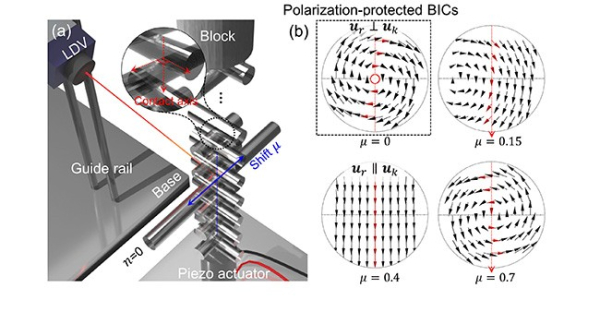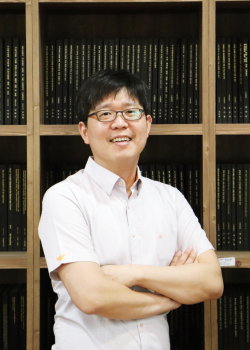
A joint research team of POSTECH and Jeonbuk National University recently developed a technology for “perfectly trapping waves,” a feat previously thought to be impossible. Their findings were published in Physical Review Letters.
Imagine riding a swing: it will travel much higher when pushed at just the right moment. This is an example of “resonance,” a phenomenon in which a wave is amplified at specific frequencies. Many devices around us, such as cellphones, radios, and ultrasonic equipment, rely on resonance. A problem with conventional systems was that they suffered from gradual energy leakage during resonance, thus requiring a continuous energy supply.
A century ago, Nobel laureates John von Neumann and Eugene Wigner proposed the theory of “Bound States in the Continuum (BIC),” which describes the possibility of confining waves without energy loss. It is analogous to a vortex forming in a flowing river, where water continuously swirls in place despite the overall current. Likewise, BIC theory describes a situation where wave energy remains trapped in a localized state, even though it would be expected to spread out. At the level of individual particles, however, the scientific community has long regarded such states as implausible.

The research team overcame this theoretical limitation and proved that BICs can exist even at the level of single particles. They fabricated an experimental device made up of a granular crystal composed of cylindrical solid particles. The team precisely tuned the contact interfaces between particles to control the degree of wave coupling. As a result, they successfully realized a “polarization-protected BIC” in which energy emission to the external environment could be obstructed.
In this system, a quality factor (Q-factor) exceeding 1,000 — a measure of how effectively a resonator confines energy — was achieved in the quasi-BIC state. Even more remarkably, when multiple cylindrical resonators were connected, a phenomenon known as “flat bands,” where waves become simultaneously localized and confined in all resonators, was observed. This phenomenon is similar to the ripples produced when a stone is dropped in a shallow pond. Despite having sufficient energy to spread outward, the waves are trapped to the surface. They oscillate in place and remain spatially localized, a defining feature of flat bands.
Professor Junsuk Rho (ME, CE, EE, GSCST) stated, “We broke a long-standing theoretical limit. Although we are at the stage of fundamental research, it is expected to serve as a significant breakthrough in various fields, including energy harvesting, ultra-sensitive sensing, and communication technologies.”


